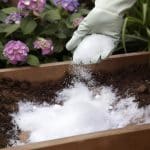
Are you eager to enjoy the delightfully fresh taste of homegrown lettuce, but lack the space for a full-fledged garden? Look no further than container gardening! Growing lettuce in a container offers a convenient and rewarding solution, allowing you to cultivate this versatile leafy vegetable in even the smallest of spaces. In this comprehensive guide, we will walk you through the step-by-step process of successfully growing lettuce in a container, ensuring a bountiful harvest of vibrant, crispy greens right at your fingertips.
Container gardening has become increasingly popular due to its accessibility and flexibility. Whether you have a balcony, patio, or limited yard space, you can easily set up a container garden and grow your favorite lettuce varieties. With the right container, suitable soil, proper care, and a little bit of patience, you can savor the joy of harvesting your own homegrown lettuce. So, let’s dive in and discover how to create a thriving container lettuce garden that will bring both flavor and freshness to your meals.
Step 1: Choosing the Right Container
Selecting the appropriate container is crucial for the growth and development of your lettuce plants. Look for a container that is at least 6-8 inches deep and has a diameter of 12-18 inches. Opt for containers made of plastic, clay, or wood, as they provide good drainage and insulation. Ensure that the container has drainage holes to prevent waterlogging.
Step 2: Selecting Lettuce Varieties
Lettuce comes in various types, such as loose-leaf, romaine, and iceberg. Consider your personal preferences and available space while selecting the lettuce varieties. Loose-leaf varieties like ‘Salad Bowl’ or ‘Lollo Rossa’ are ideal for container gardening due to their compact size and continuous leaf production.
Step 3: Preparing the Soil
Lettuce thrives in well-drained, fertile soil. Prepare a potting mix by combining equal parts of compost, peat moss, and perlite or vermiculite. This blend provides adequate moisture retention while allowing proper drainage. Fill the container with the potting mix, leaving about an inch of space below the rim.
Step 4: Sowing Seeds or Transplants
You can start lettuce from seeds or use transplants purchased from a nursery. If sowing seeds directly, sprinkle them evenly across the soil surface and lightly press them down. Cover the seeds with a thin layer of soil, approximately one-fourth of an inch deep. Water the container gently to settle the soil.
Step 5: Providing Optimal Growing Conditions
Lettuce grows best in cooler temperatures, ideally between 45°F and 75°F (7°C to 24°C). Place the container in a spot that receives partial sunlight, around 4-6 hours per day. If the weather becomes excessively hot, move the container to a shaded location to prevent the lettuce from bolting.
Step 6: Watering and Moisture Management
Consistent watering is crucial for lettuce cultivation. Keep the soil evenly moist but not waterlogged. Avoid overhead watering, as it may lead to the development of fungal diseases. Instead, water the soil directly at the base of the plants. Mulching the soil surface with straw or compost can help retain moisture.
Step 7: Fertilization
Lettuce plants benefit from regular feeding to support their growth and leaf production. Apply a balanced organic fertilizer every three to four weeks or use a slow-release fertilizer according to the package instructions. Avoid excessive fertilization, as it may result in bitter-tasting leaves.
Step 8: Controlling Pests and Diseases
Inspect your lettuce plants regularly for signs of pests such as aphids, slugs, or snails. If infestations occur, consider using organic pest control methods like insecticidal soaps or companion planting with pest-repellent herbs like basil or rosemary. Additionally, practicing crop rotation and maintaining good airflow around the plants can help prevent diseases.
Step 9: Harvesting Lettuce
Harvesting can typically begin when the lettuce leaves reach a usable size, usually around 4-6 weeks after planting. Harvest the outer leaves first, allowing the inner leaves to continue growing. Use a sharp pair of scissors or a knife to cut the leaves off just above the soil level. Lettuce leaves can be harvested until the plant bolts or becomes bitter.


